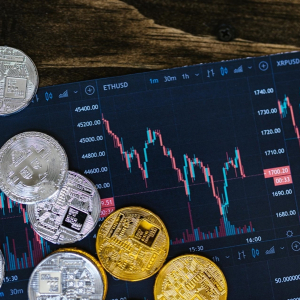CONTACT US
info@bidaiondo.com

Asset tokenization, the next revolution in the financial industry

The financial sector is undergoing transformations never seen before thanks to technology and, without a doubt, one of them, known as blockchain, is going to profoundly modify some of the pillars on which the banking industry is based. finance. This technology has multiple different applications in financial activity and one of the most likely to be developed in the coming years is the so-called tokenization of assets.
For an application to work in a blockchain ecosystem, a fundamental element such as the token is necessary. The token is the digital representation of an asset or unit of value issued on a blockchain. Without this digital representation we would not be able to exchange value on a blockchain. A token can represent any real asset that we can imagine, from tangible assets such as raw materials, collectibles or real estate, to more intangible assets such as financial instruments (stocks, bonds, carbon credits, etc.), patents, reputation or rights. of voting, to name just a few of the countless examples that exist.
Tokens do not completely replace the existence of the real asset they represent, obviously, but the process of tokenization of that real asset implies that the property rights are represented by a digital token and stored on a blockchain. Therefore, in this context tokens are actually digital certificates of ownership. Thus, in the case of a token that represents a real asset such as a gold bar, real estate or a diamond, the token will be the equivalent of the deed or certificate of ownership, not the physical asset that evidently continues to exist as such in the “real world” or outside the blockchain.
There are also digital asset tokens, which are those that do not represent any real asset but are created from a blockchain itself, such as assets used in games and metaverses, the voting and governance rights of so-called DAOs or autonomous decentralized organizations. , or digital assets that allow interoperability between different blockchains. But we will not discuss this type of tokens without origin in the real world in this article but only those that represent assets in the real world (also known by the acronym RWA, real-world assets).
Tokenization of real assets or RWA brings multiple advantages to the financial industry. The first of them is the automation of all processes and the immutability of transactions thanks to the decentralized structure of these markets. Tokenization happens in a blockchain and through computer code (the so-called smart contracts) all possible events are programmed when issuing, trading or giving performance on a financial asset such as a stock, a bond or a Investment fund. The intervention of any central authority, exchange or body that discretionally makes decisions about this market is not necessary, but everything happens in a decentralized and autonomous manner.
An advantage derived from this absence of intermediaries and central authorities is the greater efficiency and cost reduction that financial assets and markets will achieve with tokenization. Although there are still challenges such as scalability and the bandwidth necessary for trillion-dollar financial markets to operate in a decentralized environment, tokenization introduces clear advantages in terms of lower costs and permanent access to these markets, since its Programmability and automation allow them to operate 24 hours a day, 365 days a year, compared to traditional financial markets that only operate certain hours and days.
These advantages, which have to do with efficiency, immediacy, and easy access, are undoubtedly important, but in my view the great leap forward that tokenization brings is fractionality, that is, the ability to divide a real asset, or rather its ownership, in multiple tokens, so that a greater number of people can be given access to assets until now reserved for large fortunes. An example can be found in the art market. Until now, a Picasso or a Van Gogh could only be acquired by a small number of people or institutions due to the high unit value of each of their works. On the other hand, the same work or, rather, its property, can be divided into millions of tokens, each with a price suitable for any investor, so that these lower-net-worth investors are given immediate access to new asset classes, giving them the possibility of greater diversification in their portfolios. We cannot acquire a painting for 100 million euros, but we can acquire a token that represents one millionth of the painting for about 100 euros.
Fractionality, along with the rest of the advantages of tokenization, will give rise to new financial markets that until now have not existed or are very restricted in supply and demand. Let's think about all types of shares, not only those of listed companies but especially those of unlisted companies; or in any corporate debt instrument, in real estate, in investment funds, in luxury cars, in precious metals... Investable assets with the capacity to be liquid instantly, gigantic financial markets that join the classics of listed shares, corporate and government bonds or currencies.
According to Boston Consulting Group, the business opportunity that the tokenization of hitherto illiquid assets will entail in 2030 is estimated at around 16 trillion dollars (European trillions). These 16 trillion dollars is a certainly notable figure since they represent 10% of the world's Gross Domestic Product. However, it will still be a very small figure in relation to the size of the financial industry in the world. To give some examples, the gold market alone totals 12 trillion dollars, while the listed stock market totals about 115 trillion dollars, not to mention the gigantic real estate markets (330 trillion dollars), bonds (300 trillion dollars) or the amount of money itself in circulation (about 120 trillion dollars). These are figures that put into perspective the relative importance in the medium term of tokenized assets in the financial industry, but at the same time the enormous growth potential that awaits the tokenization of assets in the coming
https://cincodias.elpais.com/cincodias/2023/12/27/idearium/1703674899_140632.html
Last news
FITUR apuesta por la IA para revolucionar la atención al público.

Temu lanza su nueva app para Shopify en España: una puerta de entrada a millones de clientes globales.

online trading systems.
 We show you the best way to market products and services online, through a professional service of installation, management and maintenance of your virtual store
We show you the best way to market products and services online, through a professional service of installation, management and maintenance of your virtual store
We program to suit you
 We help you achieve operational excellence in all your business processes, whether they are production, logistics, service or office processes. In addition, we assure you to maintain continuous improvement in your management.
We help you achieve operational excellence in all your business processes, whether they are production, logistics, service or office processes. In addition, we assure you to maintain continuous improvement in your management.
Bidaiondo Articles
Technical SEO vs Content SEO: When to hire an external expert.

In the world of search engine optimization (SEO), not all tasks are created equal, nor do they require the same level of expertise. While we often refer to SEO as a single discipline, it's actually divided into two main areas that complement each other: technical SEO and content SEO. Both are essential for an eCommerce site to achieve organic visibility, but they involve very different skills. This is why many companies wonder when the right...
Christmas marketing ideas to increase engagement… and your sales.

Christmas is the perfect time to enjoy family and friends, savor delicious dishes and sweets you don't get to eat the rest of the year, take that short getaway you've been dreaming of… and, of course, sell. The Christmas campaign is undoubtedly the highlight of the calendar for millions of companies worldwide: a crucial period when a large part of the year's budget is at stake. That's why marketers around the globe dedicate...

ABOUT US
FILES

Welcome to Bidaiondo, dear user
BIDAIONDO SL, as the party responsible for the website www.bidaiondo.com, uses its own operating cookies and those of third parties of an analytical nature to allow the use of the website, analyze our services and show you information related to your preferences based on a profile drawn up from of your browsing habits (for example: pages visited). Please bear in mind that, if you do not activate some types of cookies, such as operational and analytical cookies, your experience of using this website may be affected. You can obtain more information and configure your preferences in the CONFIGURE option that appears below, you can reject cookies in the REJECT AND CLOSE option or accept all cookies and continue browsing in the ACCEPT AND CLOSE option.
So do you want to know more?
Data privacy seems important to you, and it is to us too. We store cookie data for 13 months. If you want to know more, you can visit our pages Privacy Policy y Cookies policy. Do you know what cookies are? Cookies are files that are used by virtually all websites. When browsing our page, they are installed in your browser or device to ensure that the website works correctly and store information about your visit. The data provided by cookies treat the user anonymously and in no case do they store personal information.
The data collected by the cookies we use are:
- Addresses IP
- References of visited pages
- References of downloaded files
- The website itself www.bidaiondo.com
- https://www.moz.com
- https://secure/europeanssl.eu

 Spanish
Spanish













